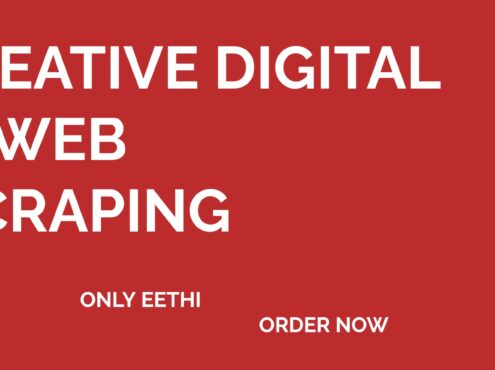Teach You How to Scrape, Extract Data on Websites
Service Description
Welcome to the world of web scraping using Parse Hub! With your experience and qualifications, you’ll be able to leverage ParseHub’s powerful features to extract data from websites efficiently. Let’s get started with this step-by-step guide.
Step 1: Setting Up Parse Hub
Create an Account:
Go to the Parse Hub website and sign up for an account if you haven’t already.
Download and Install Parse Hub:
Download the Parse Hub desktop application and install it on your computer.
Step 2: Starting a New Project
Open Parse Hub:
Launch the Parse Hub application.
Create a New Project:
Click on the “New Project” button.
Enter the URL of the website you want to scrape and click “Start project on this URL”.
Step 3: Building Your Scraping Template
Select Elements to Scrape:
Use the point-and-click interface to select elements on the webpage you want to extract.
Click on the elements (e.g., text, images, links) you need, and Parse Hub will highlight and recognize similar elements on the page.
Create Selectors:
Use the sidebar to create and manage selectors.
Rename selectors for better organization (e.g., “ProductName”, “Price”, “Image URL”).
Step 4: Setting Up Pagination (if needed)
Handle Multiple Pages: If the data spans multiple pages, set up pagination by selecting the “Next” button on the website.
Use the “Click” command to tell Parse Hub to navigate to the next page and repeat the extraction process.
Step 5: Running Your Project
Run the Project:
Click on the green “Run” button to start scraping.
Choose to run it on the cloud for larger projects or locally for smaller tasks.
Monitor Progress:
Monitor the progress and ensure that the data is being extracted correctly.
If necessary, pause the project to make adjustments to selectors and commands.
Step 6: Exporting Data
Export Your Data: Once the scraping is complete, export your data in the desired format (e.g., CSV, JSON, Excel).
Click on “Get Data” and choose your preferred format for export.
Tips and Tricks
Advanced Selectors:
Use CSS selectors and XPath for more complex data extraction tasks.
Utilize regular expressions for refining your data extraction.
Automating Projects:
Schedule your projects to run at regular intervals to keep your data up-to-date.
Use Parse Hub’s API to integrate scraping results directly into your applications.
Handling Dynamic Content:
For websites that use JavaScript to load content, ensure that you account for dynamic elements by using appropriate delay commands.
FAQ
Q: Can Parse Hub handle sites with infinite scrolling?
A: Yes, use the “Scroll” command to load more content dynamically.
Q: How do I troubleshoot common issues?
A: Refer to ParseHub’s support documentation and community forums. Adjust your selectors, use the “Wait” command for delayed content, and ensure you’re correctly navigating pagination.
Q: What should I do if the website layout changes?
A: Regularly update your scraping templates to match the new layout. Use robust selectors to minimize the impact of minor changes.
By following this guide, you’ll be able to set up and run Parse Hub projects efficiently. Happy scraping!








